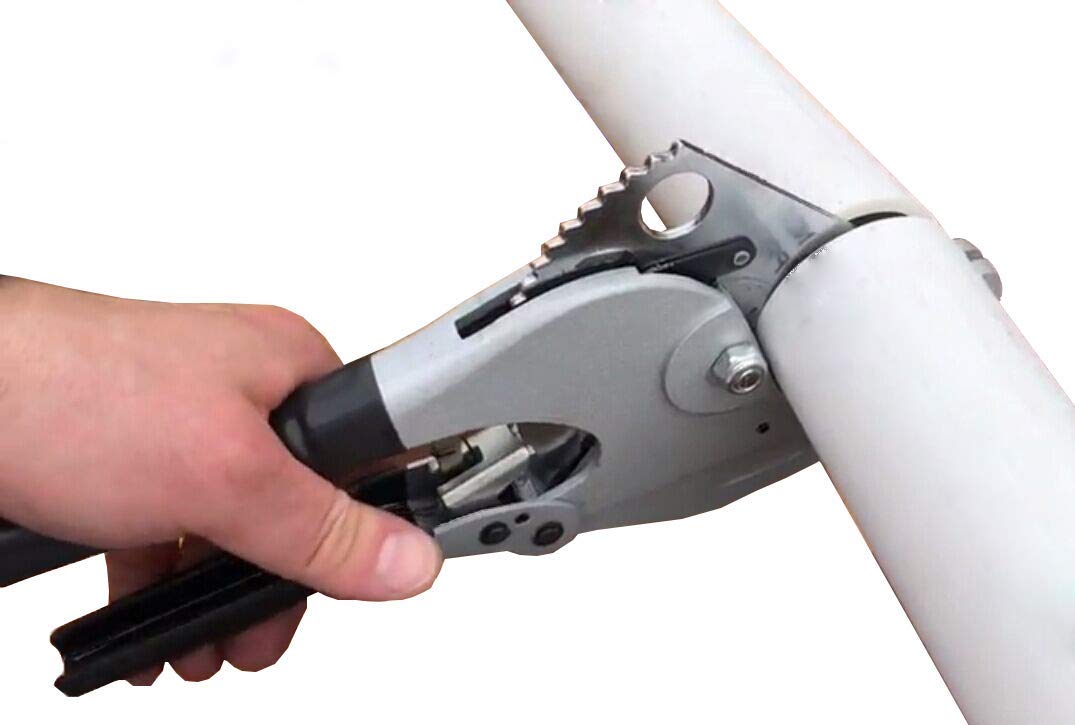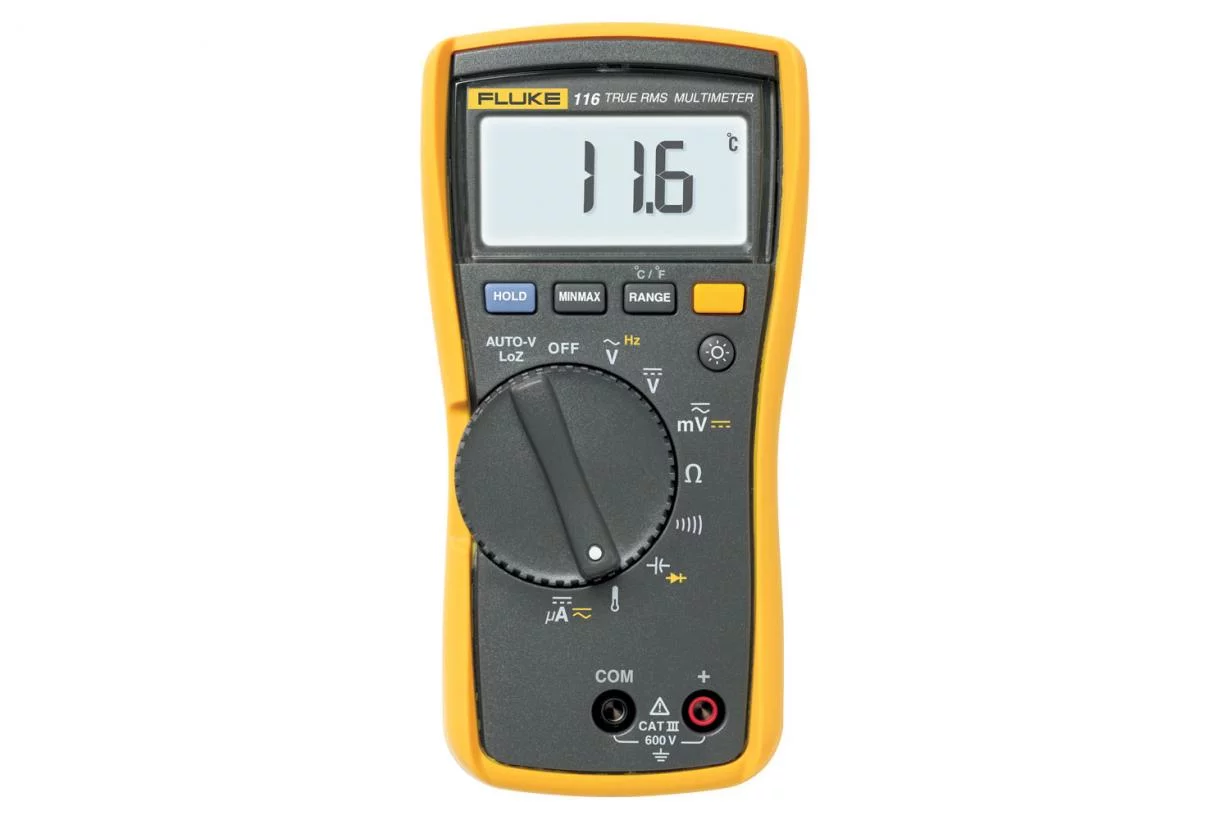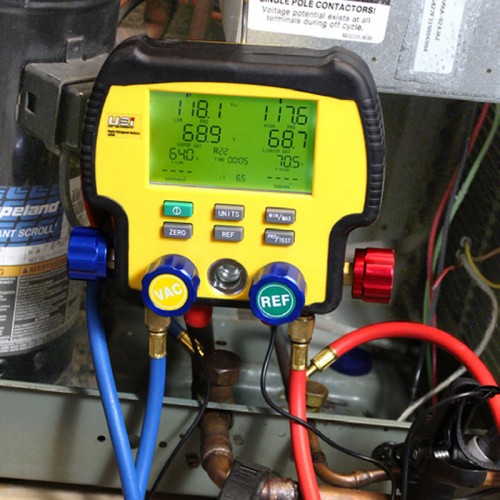The HVAC/R field is a tool-heavy one, do you have all the essential HVAC service tools to get the job done right?
That’s no surprise since the HVAC tech’s job encompasses multiple fields: Part pipe-fitter, part refrigerant tech, and part electrician, to name a few.
That means needing a diverse array of HVAC service tools to get the job done, from the simple and cheap, to the expensive and highly specialized.
So whether you’re new to the HVAC profession, starting an independent HVAC business, or simply looking to compare load-outs, here’s a list of the must have HVAC service tools you need – plus a few extras that are nice have.
Why the Right HVAC Tools Matter
The HVAC profession is large, so we’re going to talk in broad terms here. There is no one-size-fits all list perfect HVAC service tools list.
After all, the 28 percent of HVAC techs that service single-family homes may have different needs than the 10.1 percent that primarily work in office buildings or the 10.5 percent that work in manufacturing and industrial buildings (source: IBISWorld report).
But no matter where you’re doing your HVAC work, having the right set of tools matters. Time is money, so it’s essential to be able to reach for the right tool in the moment instead of having to run out and find or buy something new.
HVAC professionals can and should learn from the tips, tricks, and tools their peers use working different HVAC setup – whether a home or a factory – than they’re used to.
Rather than a comprehensive “must-have” of every single HVAC tool, think of this as an ideas list to improve your HVAC tools list, save time, and earn more money.
Essential HVAC Service Tools List
The Basics
Below, we’ve listed the most essential HVAC tools technicians need.

Hammer. You’ll probably want an assortment of hammers, from standard to ball peen, but especially a dead blow hammer. Dead blow hammers distribute the force of the hammer impact (as opposed to the other two, which concentrate it), thereby minimizing damage while hammering away. This can be important in delicate HVAC work.
Set of screwdrivers. Screwdrivers are probably already part of your toolbox, but you’ll want a versatile set to add to your hand tools list nonetheless. A flat head screwdriver and #1 and #2 Philips heads are musts, but a full set of additional screwdrivers (or heads) from Torx to Hex, wouldn’t go amiss.
We recommend owning at least one ratcheting screwdriver with swappable heads. It’s not good for the very tightest of spaces, but in all other circumstances, it’ll save considerable turning time.
Headlamp. The kinds of tight, dark, spaces that an HVAC tech finds themselves in practically begs for a headlamp. After all, you’ll need your hands free to do the work. Headlamps also have the benefit of tracking where you move your head – handy even in a lighted space.
Flashlight and work light. Of course, you’ll still need a flashlight. We prefer heavy-duty mag lights of various sizes, but any durable flashlight will do. A plug-in work light is also handy.
Pliers. Get a full set of insulated pliers to limit your risk of electrical shock. Variety is good here: Needle-nose, channel-lock, and linesman pliers will all come in handy.
Wrench Set. HVAC includes a not-inconsiderable amount of tightening and loosening bolts, nuts, and piping. Get a set of fixed and adjustable wrenches and pipe wrenches for your toolbox.
Steel shears and tin snips. Sometimes have to cut sheet metal down to size. For that, you should get tin snips. We recommend a full set of Aviation snips, specially designed to make cutting curves and lines into sheet metal easier. Go ahead and get the full color-coded set.
Drills.Drills and drivers are a must. Investment in quality pays off here. Look for trusted brands like Milwaukee and Bosch with cordless options that maintain good power.
Specialty drills like the angle drill with a pivoting head – which has a slim form that can easily slip around tight corners and tighter spaces – are an absolute game-changer.
Pipe and Tube Cutters. Speaking of tight spaces, get some close quarter tubing cutters for those hard-to-reach spaces as well as a pair of grip-handled tube cutters for normal spaces where a little more torque is required.
PVC Cutter. Cutting pipes, whether metal or plastic, is a normal part of the everyday HVAC tech’s life. A PVC cutter can help get
Extension cords. Not ever power tool can be cordless and you’ll still need a place to charge your backup batteries regardless. A few heavy-duty extension cords and a power strip or two go a long way. Enough said.
Awl. Punches holes in piping. The kind of minor tool that you never think about but absolutely miss when it’s not there.
Sawzall. Punching bigger holes in piping. A reciprocating saw is great for many on-the-job cutting tasks. In a pinch, you can skip lugging around a circular saw, since nine times out of 10 the Sawzall will do the job provided it has the right blades.
Caulking gun. Air leaks make for unhappy HVAC systems, so you’re going to need a proper dripless caulking gun to seal any gaps and holes you find (or create) as you work.
Tubing bender. Whether putting in splits for an air conditioning system or some other wiring work, a reliable tubing bender is a must-have. Ratcheting benders are particularly easy to use.
Wet/Dry shop vacuum. A small wet/dry shop vac might not seem like a usual part of the tool kit but it belongs in the truck.
You’re working with refrigerant, cooling systems get wet, attics and basement get full of gunk and junk. This is your solution to clogged drain lines.
Safety Equipment

Safety first! It’s easy to forget basic safety equipment, but here are a few items you should have on hand (and use, seriously).
Safety glasses. Eye-protection is a must, especially when using power tools cutting through metal. A stray shaving or piece of shrapnel could mean a trip to the hospital.
Durable gloves. A pair of durable work gloves are handy for similar reasons. Sheet metal is sharp, boilers are hot – you get the picture. Something like these Grainger 15 Gauge Bipolymer Coated Gloves is just the ticket at $6 a pair. Get multiple.
Ear protection. Maybe you’re not much of a music lover, but HVAC techs should wear ear protection any time they’re using power tools in enclosed space. Either disposable earplugs or full-on earmuffs should provide adequate protection.
Rugged work boots. This is one of those items that should be thought of as an investment. Hard toed or steel-toed work boots made from good leather will last a lifetime (and will need to, with the kind of beating they can take with regular HVAC work).
The feeling of invincibility you’ll get when you drop something heavy on your foot on the job will make it all worthwhile.
Specialty Tools

Refrigeration gauges. You’re an HVAC tech which means working with refrigerant, so you’ll need a set of refrigeration gauges, and perhaps multiples. These gauges help you check for leaks and to see if you need to purge, braze and recharge an HVAC system.
Refrigerant Scale. Along with your refrigerant gauges, a refrigerant scale is another must. Too much or too little refrigerant in the system will make it run non-optimally (if at all). A refrigerant scale ensures that the weight – and therefore precise amount – of refrigerant is added or subtracted from the system.
Multimeter. While an HVAC tech isn’t strictly an electrician, you get your hands on electrical wiring often enough that a multimeter is a must. We recommend Fluke 116, a multimeter designed specifically for HVAC professionals and which has a built-in thermometer to take temperature readings.
Vacuum pump. A vacuum pump is one of those must have HVAC service tools, necessary for removing moisture and air from refrigerant lines while performing service work. These come in one- or two-stage units, with two-stage units pulling deeper vacuum and faster, but more expensive.
Still, unless you’re doing handyman work or relatively light jobs, a two-stage unit is the only real option for a serious HVAC professional.
Nitrogen regulator. A nitrogen regulator is helpful for purging and pressure testing your HVAC systems.
Refrigerant recovery machine and tank. But before you can vacuum out refrigerant lines, make sure you have a recovery unit, since federal law requires techs capture and recover refrigerant for environmental safety reasons.
Leak detector. Some leaks in an HVAC system are obvious, but you can’t eyeball every leak. While you don’t strictly need a dedicated leak detector – you can use a vacuum pump do an evacuation test or use dyes too – a dedicated infrared device makes the job much easier.
Metal crimper. A crimper is necessary for easily. putting indentations into ducting. This 5 Blade Duct Crimper from Klein Tools is made specifically for HVAC professionals.
Seamer. Related to the crimper, a hand seamer for bending sheet metal should also be in your tool chest. You can also straighten metal that needs adjusting with this tool.
Megohmmeter. The “Megger” is an insulation resistance tester and fairly essential for ensuring that an A/C compressor’s windings are functioning properly.
Non-essential HVAC Tech Tools (That are Still Nice to Have)

None of the tools that follow are strictly necessary in order to accomplish most HVAC jobs, but each of them will make your life infinitely easier and should be placed on your “to acquire when I have sufficient funds” list.
Core removal tool. If you need to remove a broken valve core or want to remove a valve core without sacrificing refrigerant, a valve core removal tool comes in pretty handy. It can also make your refrigerant recovery times faster, and time is money.
Coil Fin Straightener. If you’re doing any kind of HVAC tech work, but especially residential or small office work, you’ll want to spring the $10 for a coil fin straightener. After all, coils get bent out of shape, and a good flow is essential to an efficient system.
Psychrometer. To take temperatures accurately and measure airflow within a duct system near the evaporator, you’ll need a good psychrometer. Most importantly, it will save techs time calculating superheat on the system (you know, so you don’t flood a compressor).
Micron Gauge. A micron gauge helps you take precise vacuum measurements, letting you know if the level of vacuum within a system is appropriate or indicate that further action and investigation might be necessary. They can also help you diagnose when a system is contaminant and moisture-free.
Digital refrigeration system analyzer. If you’re doing refrigerator circuit work or other heavy refrigeration-based work a digital refrigeration analyzer is a worthwhile investment (though it’s useful for air conditioning work too). Digi-Cools’ models, including the popular AK900, run around $300.
The tools that don’t fit in your toolbox

The HVAC profession can be a lucrative one, but as this list suggests, it requires a long-term degree of heavy investment in tools to get the job done. But that’s also why the career is a long one and usually starts with an apprenticeship.
So beyond the physical tools of the trade, there are the tools that make your work more valuable and time more efficient.
For instance, working towards new HVAC certifications can not only improves the tools of your knowledge-base but makes you a more attractive hire, opening up new job opportunities.
Even if you’re already an expert, firmly entrenched in a particular niche with a team of employees and contractors, HVAC software can become a critical tool for streamlining your scheduling, fast-tracking payments and cashflow, and ultimately winning more work.
Try a free, fully featured 14-day trial of FieldPulse’s field service software – developed with the input of experienced professionals in the field – today.
